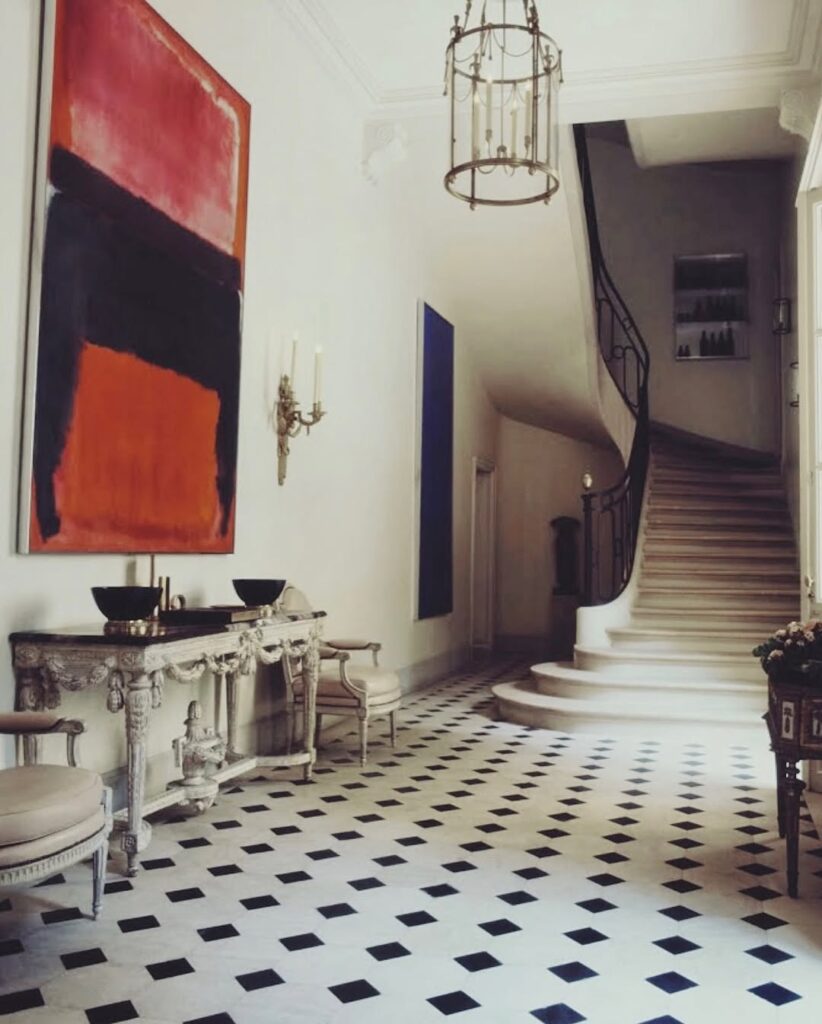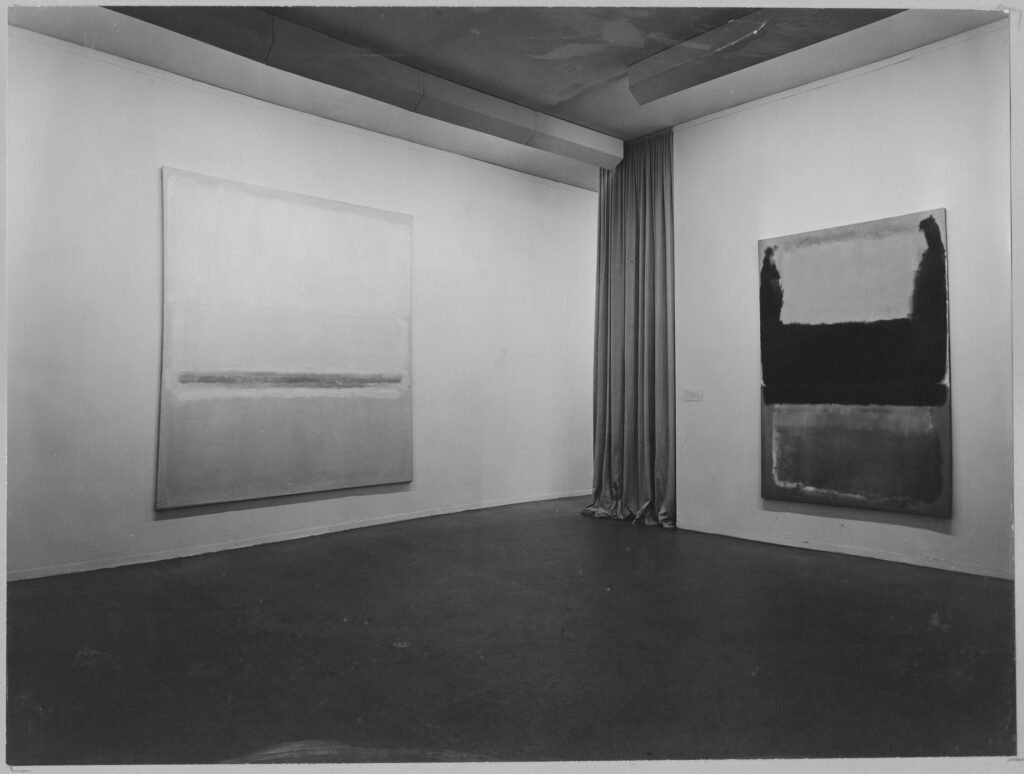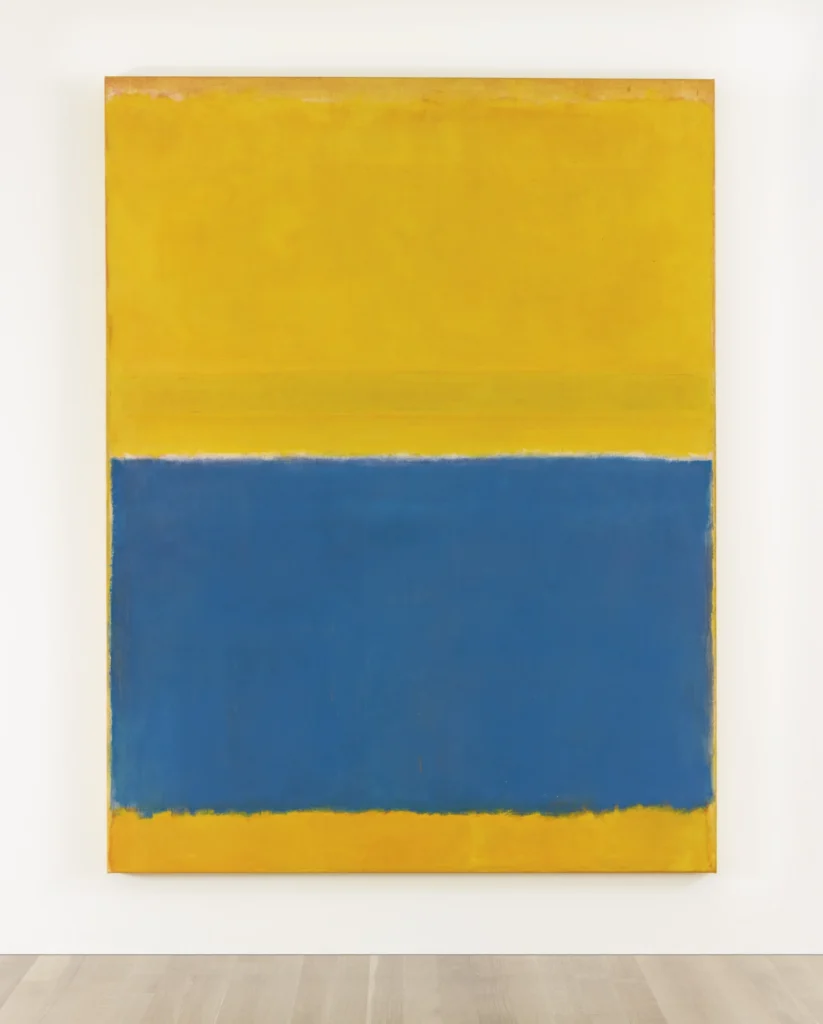
Speaking of hanging paintings upside down, a few days ago Claudio Santambrogio shared a link to a Sotheby’s Magazine story by Lucas Oliver Mill about a Franz Kline that Cy Twombly’s brother-in-law had hung upside down. In it he mentioned Pierre & Sã0 Schlumberger “famously [hanging] their Rothko upside down in the entryway of their Paris home out of pure preference.”
Which sounds like new information from last July, when Mill posted Horst’s photos of the Schlumbergers’ hall on his Instagram @collectorwalls. Then it wasn’t famously, but “Curiously,” and it was unclear if the inversion was “by personal choice or perhaps by mistake.”
Well, when Horst shot their house for Vogue in 1974, the Schlumbergers were the life of the party in Paris; São was the biggest single customer of couture in the world; and in 2014, Sotheby’s liquidated their estate, including the Rothko. So no one in that crowd was going to say the Rothko hang was anything but a masterful decorating gambit, sir.

Did they leave it upside down all the time? Did they rotate it around for fun? Did the Vogue spread bring it to their attention? Did they taunt or banish any guest tactless enough to ask about it? Maybe someone remembered seeing it in 15 Americans at The Modern, and thought, wow, this is awkward, but—
Rothko was dead and his gallery was busy defrauding his estate when the Schlumbergers bought No. 21. It’s impossible to imagine them not knowing the painting’s correct orientation. We have no stories of them fixing it. So all we are left with is what Mills landed on last month: pure preference. Some of the biggest collectors of art in the 20th century hung their Rothko upside down because they preferred it that way.
[I don’t know what to do with this, but Pierre was Dominique de Menil’s cousin; their fathers were brothers who founded the oil exploration company that gave them their fortunes. Pierre and Dominique’s husband John both worked as presidents of parts of Schlumberger in Houston, and all were involved with all the museums and contemporary art things and people in town, yet the wikipedia pages are almost surgically decoupled from each other. You know what? I expect that Dominique of the Rotkho Chapel would not have approved of an upside down Rothko. So maybe that was part of the point. This is where I decided on a title.]

None of this is mentioned in the 2,700 word essay that accompanied the painting’s 2014 sale. Like the 2015 lot essay for Untitled (Yellow and Blue), 1954, the for No. 21, Sotheby’s uncredited writer focused intensely on the rapturous experience of standing in the presence of Rothko’s existential portal to the sublime. No 21 evokes the magic of the sunset, and something more tragic and indescribably portentous:
Yet, as we are beckoned into the glowing lustrous embrace of the devastatingly beautiful and complex No. 21 there is a profound tension struck between the uplifting emotions evoked by our perception of Rothko’s vibrant hues and something implicitly more tragic. Such elemental colors as the vibrant red-orange and dazzling rose of the present work harbor primal connotations of light, warmth, and the Sun, but inasmuch as they invoke the Sun they also implicate the inevitable cycle of dawn and dusk, of rise and set, and their own continual demise and rebirth. Indeed, the near violent encroachment of the depthless black upon the shining orange expanse, though entirely and adamantly abstract, nonetheless communicates a narrative of perpetual contest between the primal forces of light and darkness. The environment that is created in No. 21 ubiquitously encompasses us yet, in its immateriality also eludes our grasp, projecting a sense of space that is at once material and metaphysical, encapsulating Rothko’s proclaimed goal to “paint both the finite and the infinite.” (Dore Ashton, About Rothko, New York, 1983, p. 179) Rothko once stated to David Sylvester, “Often, towards nightfall, there’s a feeling in the air of mystery, threat, frustration – all of these at once. I would like my painting to have the quality of such moments.” …and with its suggestion of an infinite depth in the darkest areas of the black shape, this enigmatic work harbors something that is indescribably portentous.
Oh wait, Untitled (Yellow and Blue) evoked the magic of the sunset and something more tragic and indescribably portentous, too:
Infused with an otherworldly glow, these iridescent tones harbor primal connotations of light, warmth, and the Sun; yet, in line with a perennial balance that characterizes the very archetypes of the artist’s corpus, there is a concurrent tension struck between the uplifting emotions conventionally evoked by warm golden hues and something implicitly more tragic. Inasmuch as the dazzling yellow, made endlessly dynamic by the sheer underlayers of red and blue pigment that give it an exquisite complexity, invokes the Sun it also implicates the inevitable cycle of dawn and dusk, of rise and set, of continual demise and rebirth. Rothko once stated to David Sylvester: ‘Often, towards nightfall, there’s a feeling in the air of mystery, threat, frustration – all of these at once. I would like my painting to have the quality of such moments.’ (the artist cited in David Anfam, Mark Rothko: The Works on Canvas: Catalogue Raisonné, New Haven and London, 1998, p. 88), and with its suggestion of an unobtainable horizon and an infinite, unbreakable cycle, this work harbors something that is indescribably portentous.”
It’s almost like it doesn’t matter which direction you hang your Rothko, or even which Rothko you have. As long as you have one, and it sells for $45 million.
11 Nov. 2014, Lot 17, Mark Rothko, No. 21 [sothebys]
15 Americans, 1952 [moma]
Previously, related: An infinite, unbreakable cycle of buying and selling
